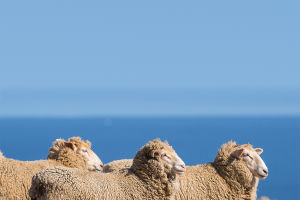Richmond Park is the largest royal garden in the UK's "Eight Royal Parks" and the second largest walled urban park in the UK, after Sutton Park in Birmingham. The park covers 2,500 acres.
The park not only has a beautiful natural environment, but also has hundreds of deer. It is one of the most important wildlife reserves in the world, and it is also a rare quiet place in the city. Whether it is spring, summer, autumn or winter, Richmond Park has the unique charm of nature.
People who like small animals in nature, or who like cycling, running and photography, cannot miss this park!
The history of Richmond Park can be traced back to the 15th century, but it was 1625 that allowed the park to have such a large population of wild deer and established its status as a royal garden. At that time, in order to avoid the plague that broke out in London, Charles I fled to the nearby Richmond Palace with his men and turned it into a hunting ground for deer.
In 1637, more than 2,000 deer were introduced. In order to prevent the deer from running around, Charles I ordered the park to be fenced off, but this decision was also strongly opposed by the locals. He had to allow pedestrians in and out, but the park's walls remain today. Today, the wild deer herd in the park is still the biggest attraction.
If you are driving by yourself, you cannot park in the lanes inside the park. Keep a low speed and pay attention to cyclists and horse riders. There are several parking lots in the park, all connected to pedestrian paths. People go for a run very early every day, and many people bring their big dogs, which is a harmonious scene.
In winter, the park is very beautiful when there is morning fog.
However, when viewing deer in Richmond Park, for the safety and health of everyone and the deer, everyone should abide by the following rules:
1. Don't touch (or even hug) wild deer
Deer look cute and loving, but feeding or petting them can be tragic - once a baby deer is touched and carries other smells, its mother may give up feeding the baby.
2. Don't feed the deer
Deer will happily eat whatever is brought to their mouths, but food provided by tourists (including fruits and vegetables) is not their natural diet and can cause harm by disturbing their digestive systems.
In addition, if people start feeding, over time, deer will naturally think that they can get food from any human, and this new behavior can easily lead to deer injury if not corrected.
3. Take your rubbish home
If you prepare a picnic when viewing deer, take the rubbish home to avoid the deer from chewing or swallowing, which can be fatal to them.
4. Keep your dog on a leash
Like bison, deer in the park are wild, unpredictable animals that roam freely. Deer may feel threatened if they come across an unleashed dog, especially during the heat (September-October) and fertile periods (May-July).
In addition to Richmond Park, there are many great places to see deer in the UK:
1. Raby Castle
The 200-acre deer park surrounding Raby Castle is inhabited by red deer and smaller fallow deer - two herds descended from deer that have lived here since Norman times.
2. Beecraigs Country Park
Beecraigs National Park was established in 1977 and covers 913 acres. The red deer herds have always been a tourist attraction, but you can also spot highland yaks and black-faced sheep here!
3. Margam Country Park
The 500-acre Margam National Park is home to 300 fallow deer, 64 red deer and 34 rare elk.
4. Gosford Forest Park
Gosford Forest Park in Northern Ireland covers 240 acres of rich woodland and open parkland and houses an early 19th-century Norman castle.


